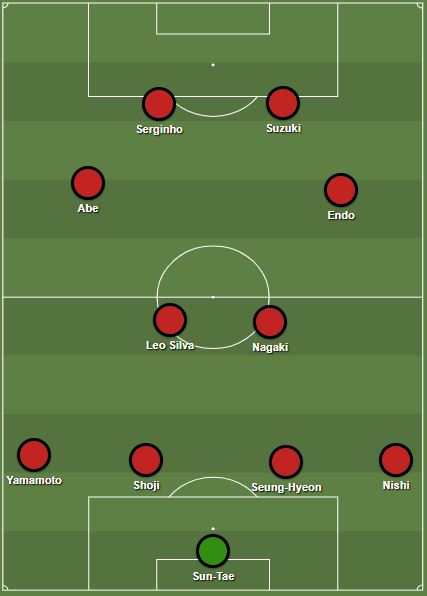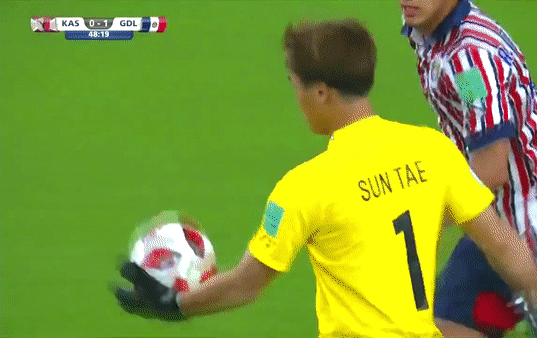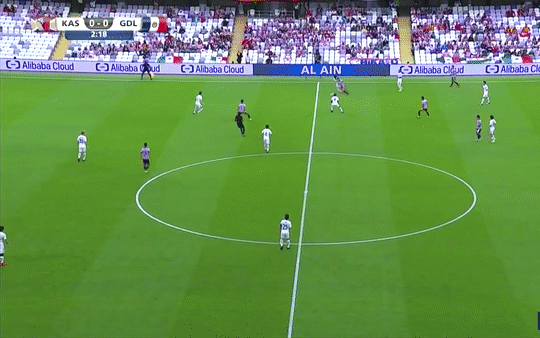Newcastle Jets had to take it to extra-time to scrape their way past Persija Jakarta, with the score ending 3-1 in the second preliminary round of Asian Champions League qualifications.
Their victory now means they must travel to Japan to take on the Asian champions, Kashima Antlers — who, bewilderingly, must still qualify for the tournament even though they are the reigning champions. The winner of this match-up will head into the group stages of the Champions League.
Kashima are certainly more of a known quantity than the Jets’ previous opponents, but for those that are still unsure of what to expect from the champions, here’s a brief summary of their 2018 season and a tactical review of their 3-2 win against CONCACAF Champions League winners Guadalaraja in the Club World Cup in December.
Kashima Antlers’ 2018 season
Kashima have historically been one of the stronger sides in Japan, regularly finishing in the top three of the J-League and winning the title on eight separate occasions since it’s inception in 1992.
Last season, they won their first Asian Champions League title, taking down Persepolis 2-0 on aggregate, allowing the title to stay in Japan with Urawa Red Diamonds winning the previous year. Their pursuit of the continental trophy meant a slight under-performance in the league, resulting in 3rd place and meaning they have to qualify for the Asian Champions League.
Manager Go Oiwa spent most of his playing career at the Antlers before moving into an assistant coach role in 2011 and earning his chance as manager in 2017. Always looking to play a positive brand of football, he encourages his team to go toe to toe with whoever their opponents are, even the likes of super-giants Real Madrid who they’ve met twice in the Club World Cup.
The Antlers last competitive fixture was in that tournament, however instead of analysing their losses to Real Madrid or the South American champions, River Plate, a closer look will be taken in their 3-2 win against Chivas Guadalajara from the Club World Cup to get an insight of how the Japanese team play against evenly matched opponents.
What are Kashima Antlers like in attack?

Kashima Antlers predicted starting line-up against the Jets
Inverted wingers
Kashima like to play a narrow structure, overloading the centre of the pitch and creating threats through the middle rather than making space laterally.
Oiwa usually places his wingers on the opposite side of their dominant foot (i.e. right footed players on the left wing and vice versa). This encourages the wide forwards to naturally come inside and overload either the midfield or the opposition’s centre-backs further forward.
Because they regularly divert towards the centre, there aren’t many crosses, though they do occasionally look to surprise opponents with an aerial ball from the channels. What you’ll see more often though, is the wingers coming inside with the ball and taking on their marker to get a good sight at goal or laying it off to a better positioned teammate.
On the left, Oiwa plays with the Brazilian Leandro or the prodigious talent Hiroki Abe who at only 20 years old has already made 35 seniors appearances for the Antlers and was awarded the J-League’s Rookie of the Year. The right side is home to Yasushi Endo, an experienced player who has spent his whole career at Kashima, with 242 appearances.
The fullbacks also played conservatively against Chivas, not moving forward to look for the overlap as they were wary of the counter. If they repeat this strategy against the Jets, the wide attackers, likely to be Dimitri Petratos and Kaine Sheppard, will need to put a shift in defensively to outnumber the Japanese wide players.
Dangerman Yuma Suzuki
Yuma Suzuki is Kashima Antlers’ ace. Last season, he had a direct involvement (goal or assist) in 20 goals in the league campaign, the third highest in the league, as well as an additional two goals and three assists in the Asian Champions League.
He was injured for the Club World Cup, but Transfermarkt does state that he should have recovered by now, though he did not play in their pre-season fixture last week. By doing some in-depth research and getting in touch with some of my close Japanese contacts (looking at his Instagram), it does look like he is in training, so it should be expected that he will make an appearance against the Jets, whether that be from the bench or starting.
I haven’t been able to find much of his gameplay to have a more critical look at, but if you do want to watch some of his talents, you can take a look at this compilation video on YouTube (though take it with a grain of salt as these YouTube videos could make even Michael Mifsud look good).
Aside from Suzuki, another threat is his strike partner Serginho, who put the team on his back on the road to becoming kings of Asia with five goals in the six knockout matches they played during the Asian Champions League.
Central defenders Nikolai Topor-Stanley and Nigel Boogaard might be in for a rough night if they are tasked with marking both of these prolific strikers, on top of the existing concerns from the rest of the opposition.
Counter-attacking threat
This might not be as much of a worry as it’s expected that Newcastle will be on the back foot for much of the game against the Japanese representatives, but it is worth mentioning the Kashima are a dangerous threat on the counter.
They are quick and purposeful when they move, and with so many attacking threats it’s very hard to stop them. Here’s an example in the GIF below from their match against Chivas Guadalajara last year for their equalising goal. Kashima Antlers are the team in white.

When the Jets do attack, they’d be advised not to commit too many numbers forward, because if they get caught in advanced positions, they could soon find themselves chasing shadows as well as the game.
What are Kashima like in defence?
4-4-2 Formation
Kashima play a rigid 4-4-2 in attack and defence, but I’m noting in the defensive section because there is definitely room for the Jets to exploit here.
It seems that when a player is moved out of position, there isn’t much organisation within the ranks to decide who covers their spot or where exactly they should be. Of course, moving the opposition defence is easier said than done — As the Socceroos learnt the hard way — but there is still an opportunity here for the Jets.
This was how the Antlers conceded their first goal against Guadalajara and it’s a weakness that Petratos and Ronald Vargas in particular will have to try and take advantage of.

These two players are the ones that are most skillful with the ball at their feet, so if they can either dribble past someone or drag a marker outside of their position, there will be room for teammates to move into and get into a favourable location to test the goalkeeper.
The inside forwards in offence also mean that the Antlers have a fairly narrow structure when transitioning into a defensive phase. Jets should look to play a wide game when winning the ball by getting the wingers forward and, if possible, the fullbacks too.
An aggressive defence
Another reason there’s an opportunity to move players out of position is because their defenders are quite liberal when challenging the person they’re marking.
They will gladly move out of position to put the man on the ball under pressure and try to dispossess them, rather than waiting for support from the midfield. This leaves room in behind them and no one to cover.
The Jets forwards must try to find space in between the defensive lines of the back four and midfield because it gives an opportunity for them to penetrate the first line of defence organised from the midfielders, as well as enough room to try and outskill the onrushing defenders.
However, the Antlers defenders know what they’re doing, shown by the fact that they have the highest number defensive duels in the J-League and the sixth highest when it comes to interceptions.
The Asian champions are, unsurprisingly, a well-drilled defensive side and to beat them it’ll come largely through individual skills to beat their marker as well as a coordinated defence without the ball.
Tough, but not impossible.
Follow me on Twitter @ShababHossain13
